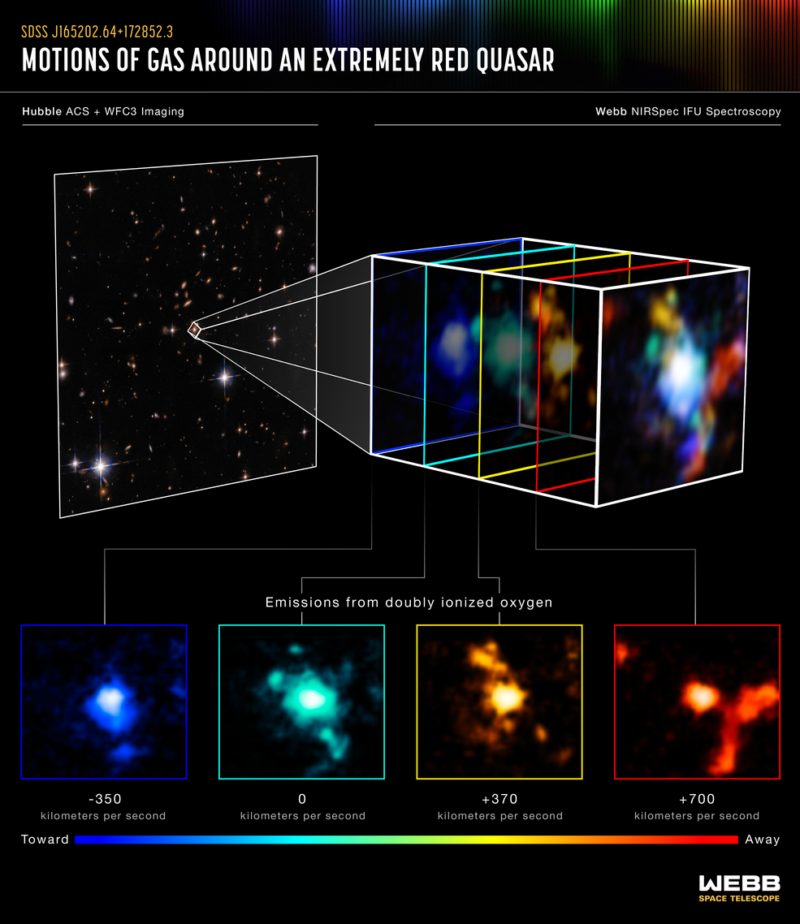New Webb images illuminate the formation of a galaxy cluster

Enlarge / Separating out different wavelengths of light lets us track the movement of material toward and away from Earth. (credit: NASA, ESA, CSA, STScI)
A team of researchers is publishing a paper based on new images taken by the Webb Space Telescope. The images reveal a dense concentration of matter in the early Universe, potentially indicating early stages in the formation of a galaxy cluster. And thanks to the spectrograph present, Webb was able to confirm that several galaxies previously imaged by Hubble were also part of the cluster. It even tracked the flow of gas ejected by the largest galaxy present.
Graphing the spectrumThe key hardware for this work is NIRSpec, the Near Infrared Spectrograph that is part of Webb's instrument package. While the instrument itself is highly sophisticated, it works along principles that are important for the operation of things like your cell phone's camera.
In these consumer cameras, the sensors register the brightness of three different areas of the visible spectrum: red, green, and blue. The images that result are made by combining this information, with different areas of the image having distinct intensities of each of these colors.